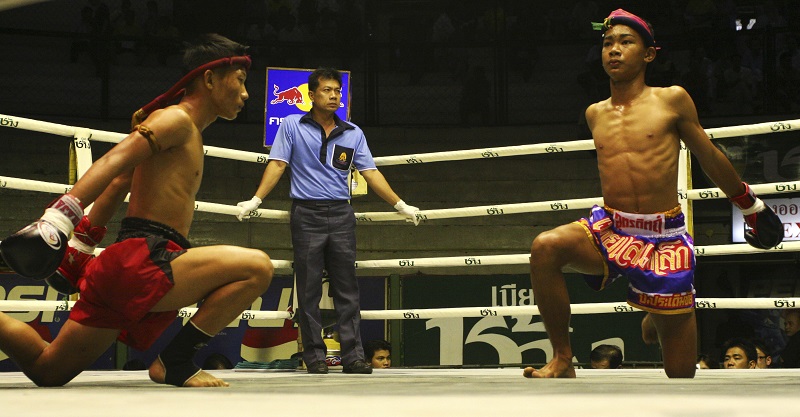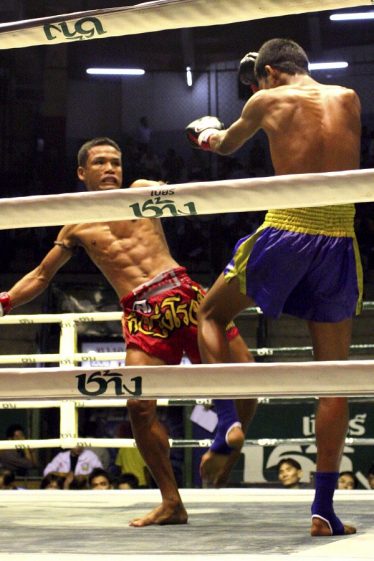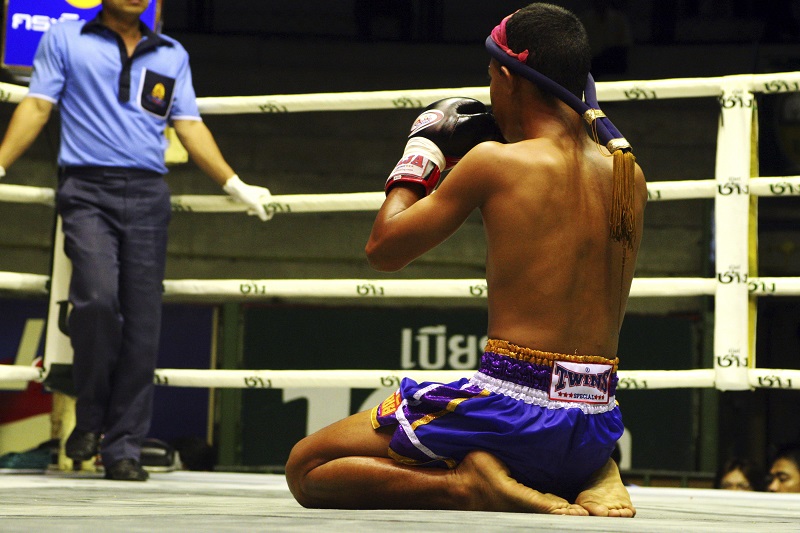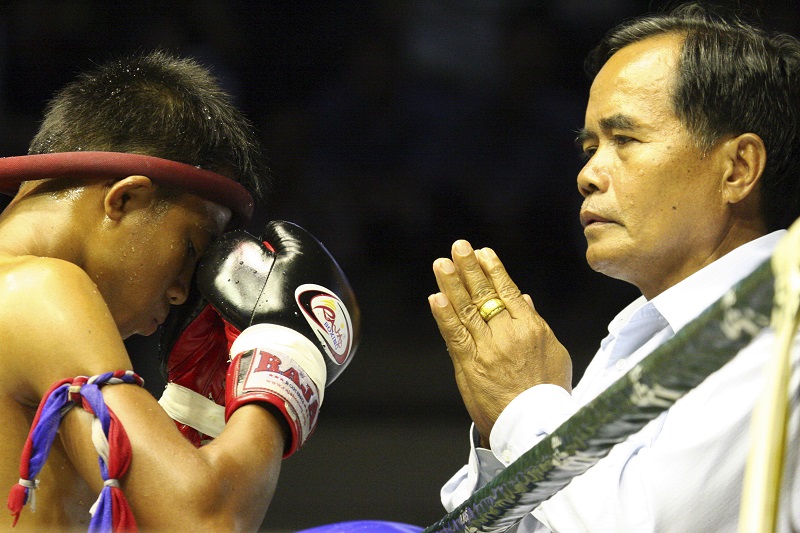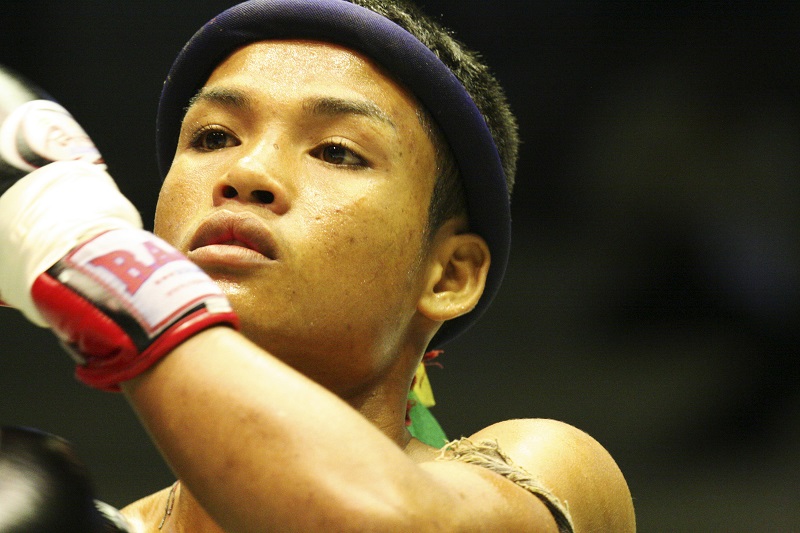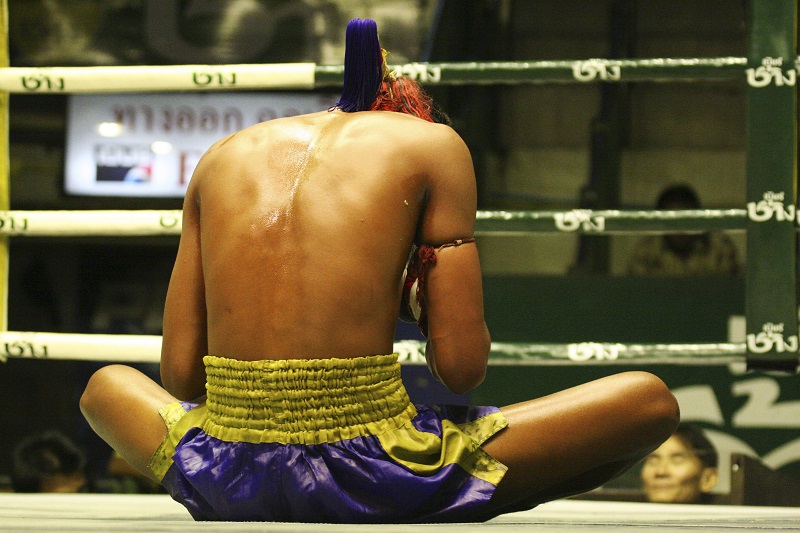Heading to museums and national monuments is not the only way of gaining insights into Thai culture and history. Stuart Forster finds that evening of Muay Thai in Bangkok, at either the Lumpini or Rajadamnern stadium, is another way of experiencing the nation’s heritage while viewing sport.
Often termed kickboxing by outsiders, the Muay Thai is also known as ‘the art of the eight limbs’.
That’s because participants are permitted to use eight points of contact to strike opponents. Use of knees, hands, feet and elbows is allowed – and required.
The development of the sport intertwines with Thailand’s history. King Naresuan the Great, who ruled from 1590 to 1605, encouraged his army to become skilled in Muay Thai, so that they would be proficient in unarmed combat.
The performance of Nai Khanomtom, who is said to have beaten ten Burmese opponents during bouts at Yangon in 1774, means that 17 March — the anniversary of those fights — is celebrated as Boxer’s Day in Thailand.
Local spectators are passionate about this sport and an evening by the ringside in either of Bangkok’s main boxing stadiums is a spirited affair.
However, the explosive event starts with a much more spiritual calm as, before bouts, boxers perform a series of intricate rituals. They provide subtle insights into Thai values and culture.
Respect before battle
Bowing after entering the ring, Wai Kru, the boxers show a display of respect for the gym, their family and the trainers, who stand in their corner. Walking anti-clockwise around the ring, the boxers pause at each corner to pray. It is believed they are home to benign spirits, which can provide boxers with strength and protection. The boxers then sway and stretch. This is Ran Muay. Sometimes standing, sometimes kneeling, the combatants recite prayers while moving their hands.
While performing these pre-fight rituals the boxers wear a headband, a Mong Kon, which is regarded a holy item. The items have been blessed by Buddhist monks at seven temples and are passed to the trainer before the fight starts. The headbands are never allowed to touch the ground. Just before a fight begins the boxers make a show of gratitude and devotion to their trainers, who are highly respected in Thailand. Some boxers and trainers then pray together.
Family and friendship
The gentleness of the pre-fight rituals contrasts by the speed and power of the fights. Despite pummelling each other, boxers tend to show strong bonds of camaraderie. Several of the boxers wear colourful armbands on their biceps; these Pra Jiad are a legacy of the colours that warriors wore when entering battle. Many of those you’ll see are made from material from the sarongs of boxers’ mothers.
Live music is an essential part of Muay Thai. Flautists and percussionists accompany bouts, just as soldiers used to be piped and drummed into battle. These days, international fighters also participate in Muay Thai at the Lumpini and Rajadamnern stadiums. Every one of them has to learn about the heritage of the sport and participate in the pre-bout rituals.
For non-combatants, understanding something about the rituals of Muay Thai adds to the evening and the experience of visiting Thailand.
Useful information
Fight nights are held at the Lumpini and Rajademnern stadiums.
See the Tourism Thailand website for more information about the country’s tourist attractions.
"ExpatGo welcomes and encourages comments, input, and divergent opinions. However, we kindly request that you use suitable language in your comments, and refrain from any sort of personal attack, hate speech, or disparaging rhetoric. Comments not in line with this are subject to removal from the site. "


